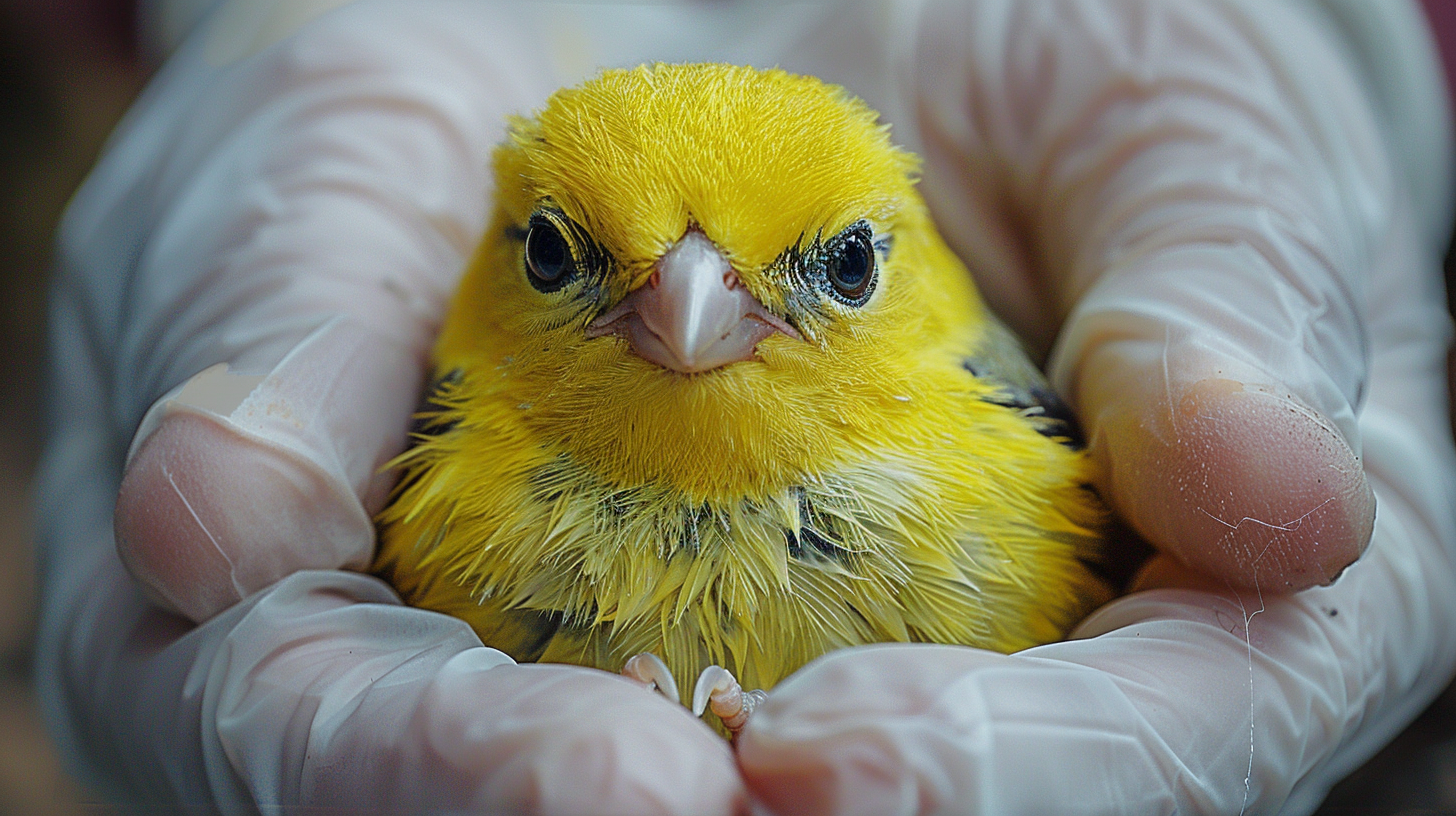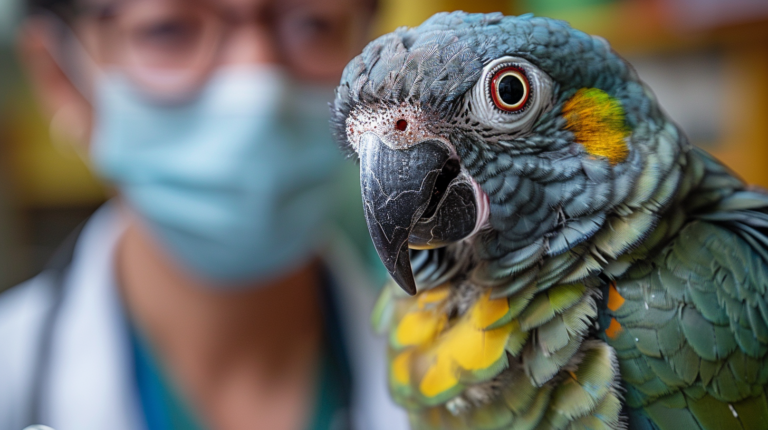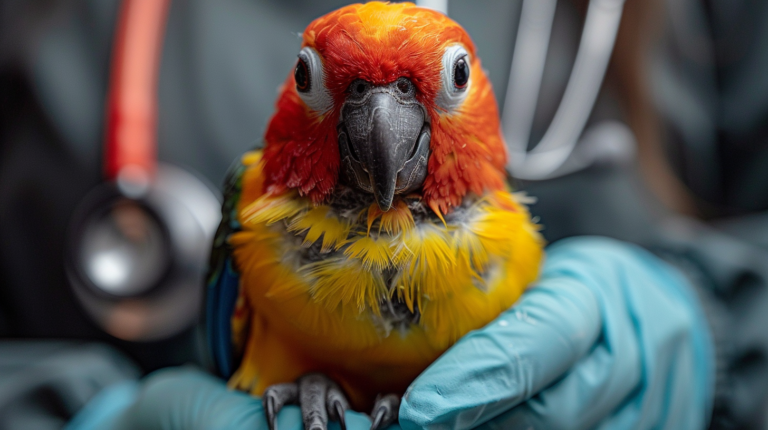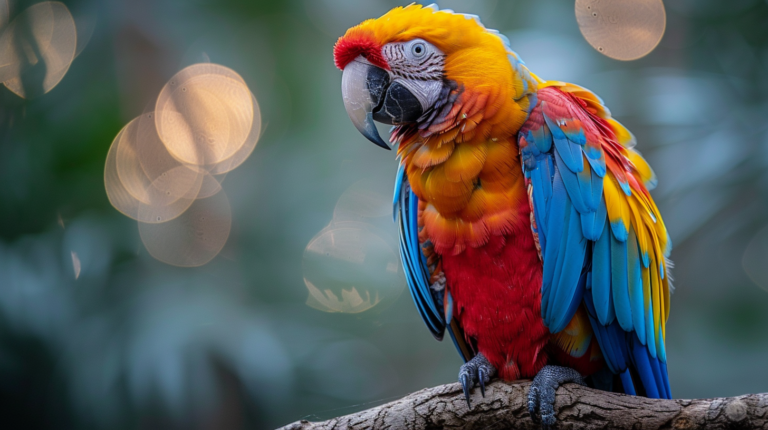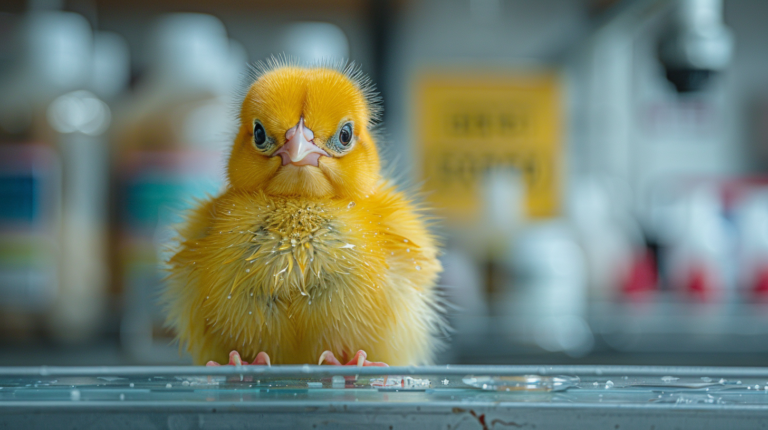Discover the alarming signs of Salmonella in birds and learn quick fixes from veterinary experts. Protect your feathered friends with our comprehensive guide.
Table of Contents
Salmonella infections in birds represent one of the most serious bacterial threats facing both wild and domestic avian populations worldwide. As a silent killer that can devastate flocks within days, understanding Salmonella in birds becomes crucial for every bird owner, wildlife enthusiast, and veterinary professional. This comprehensive guide will explore the five most alarming symptoms to watch for and provide immediate action steps that could save your feathered companion’s life.
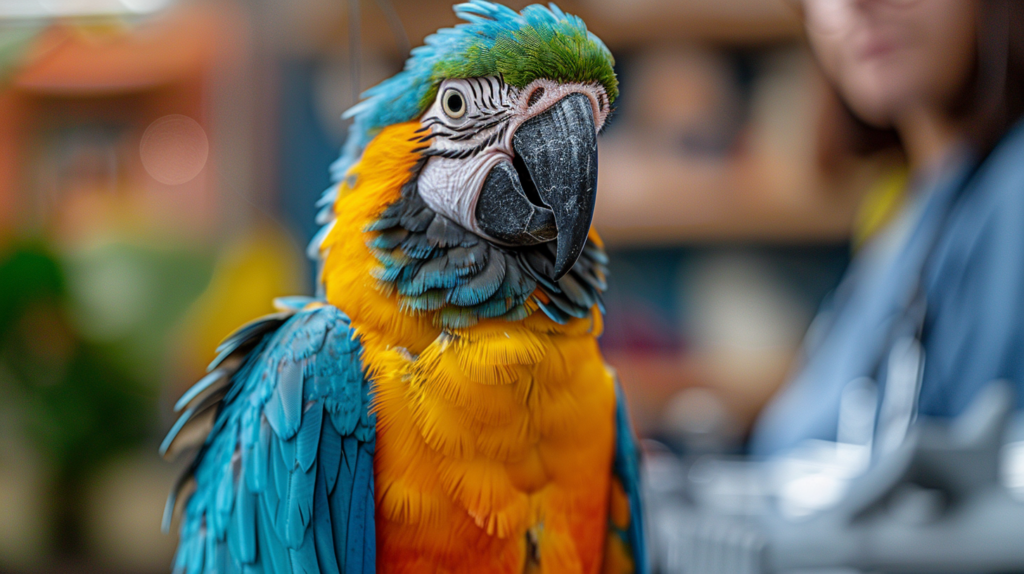
Recent studies from the American Veterinary Medical Association indicate that Salmonella infections affect approximately 15-20% of domesticated bird populations annually, with mortality rates reaching up to 80% in untreated cases. The bacteria’s ability to survive in various environments for extended periods makes it particularly challenging to control, requiring vigilant monitoring and swift intervention when symptoms appear.
Whether you’re caring for backyard chickens, pet parrots, or managing commercial aviaries, recognizing the early warning signs of Salmonella infection can mean the difference between life and death for your birds. The bacterial infection spreads rapidly through contaminated food, water, and direct contact, making prevention and early detection paramount to maintaining healthy bird populations.
| Symptom | Severity Level | Time to Onset | Description & Warning Signs |
|---|---|---|---|
| Severe Diarrhea & Dehydration | Critical | 6-12 hours | Watery, bloody diarrhea with rapid fluid loss. Bird appears lethargic with sunken eyes and decreased skin elasticity. |
| Respiratory Distress | Severe | 12-24 hours | Labored breathing, open-mouth breathing, tail bobbing, and respiratory sounds. May indicate systemic infection. |
| Neurological Symptoms | Critical | 18-36 hours | Head tilting, loss of coordination, seizures, tremors, and abnormal behavioral changes indicating brain involvement. |
| Severe Weakness | Severe | 8-16 hours | Inability to maintain normal posture, difficulty perching, reluctance to move, and general collapse of normal activities. |
| Sudden Death | Critical | 24-48 hours | Death without obvious prior symptoms, particularly in young birds or those with compromised immune systems. |
| Loss of Appetite | Moderate | 4-8 hours | Complete refusal to eat or drink, weight loss, and decreased interest in favorite foods or treats. |
| Ruffled Feathers | Moderate | 6-12 hours | Persistent fluffed appearance, poor feather condition, and inability to maintain normal body temperature regulation. |
Understanding Salmonella in Birds: The Hidden Bacterial Threat
Salmonella bacteria belong to the Enterobacteriaceae family and comprise over 2,500 different serotypes, with several strains specifically affecting avian species. The most common culprits in bird infections include Salmonella enteritidis, Salmonella typhimurium, and Salmonella gallinarum, each presenting unique challenges for treatment and prevention.
The pathogen’s remarkable survival capabilities make it particularly dangerous in avian environments. Salmonella can remain viable in dried feces for up to two years, in water for several months, and on contaminated surfaces for extended periods. This persistence means that even seemingly clean environments can harbor infectious organisms waiting for the right conditions to strike.
Dr. Sarah Mitchell, a board-certified avian veterinarian with over 15 years of experience, explains: “Salmonella infections in birds often present as acute septicemia, where the bacteria rapidly multiply in the bloodstream. Unlike mammals, birds lack a well-developed immune response to certain Salmonella strains, making them particularly vulnerable to systemic infection.”
The transmission pathways for Salmonella in birds include direct contact with infected birds, consumption of contaminated feed or water, exposure to infected rodents or insects, and contact with contaminated equipment or environments. Wild birds frequently serve as asymptomatic carriers, spreading the infection to domestic populations through shared feeding areas or water sources.
Understanding the bacterial lifecycle within avian hosts reveals why early intervention proves so critical. Once Salmonella enters the digestive system, it rapidly colonizes the intestinal tract, causing inflammation and tissue damage. Within 24-48 hours, the bacteria can breach intestinal barriers and enter the bloodstream, leading to septicemia and multi-organ failure if left untreated.
The Five Most Alarming Symptoms of Salmonella in Birds
1. Sudden Onset of Severe Diarrhea and Dehydration
The first and most recognizable symptom of Salmonella infection in birds manifests as acute, watery diarrhea that appears suddenly and progresses rapidly. Unlike normal digestive upset, Salmonella-induced diarrhea presents as profuse, often bloody or mucus-filled discharge that quickly leads to severe dehydration.
Affected birds may produce droppings that appear bright green, yellow, or contain visible blood streaks. The consistency becomes increasingly watery, and the frequency of elimination increases dramatically. Within hours of onset, birds begin showing signs of dehydration including sunken eyes, loss of skin elasticity, and weakness.
The mechanism behind this symptom involves bacterial invasion of intestinal epithelial cells, triggering massive inflammatory responses that disrupt normal water absorption. The resulting fluid loss can quickly become life-threatening, particularly in smaller bird species where body water reserves are limited.
Veterinary professionals recommend immediate isolation of affected birds and prompt fluid replacement therapy. Early intervention with appropriate antibiotics, guided by bacterial culture and sensitivity testing, can prevent progression to systemic infection.
2. Respiratory Distress and Labored Breathing
Respiratory symptoms in Salmonella in birds infections often develop as secondary complications when bacteria spread from the digestive system to the respiratory tract. Birds may exhibit open-mouth breathing, tail bobbing, and audible respiratory sounds indicating severe distress.
The infection can cause pneumonia, air sac infections, or systemic inflammation affecting respiratory function. Unlike primary respiratory infections, Salmonella-induced breathing difficulties often accompany gastrointestinal symptoms, creating a distinctive clinical pattern that experienced veterinarians recognize immediately.
Dr. Michael Chen, an avian pathologist at the University of California Davis, notes: “Respiratory involvement in Salmonella infections typically indicates systemic spread of the bacteria. This represents a medical emergency requiring immediate intervention, as respiratory failure can occur within hours of symptom onset.”
Birds experiencing respiratory distress may position themselves with necks extended, struggling to maintain adequate oxygen levels. The combination of dehydration from diarrhea and respiratory compromise creates a dangerous situation requiring emergency veterinary care.
3. Neurological Symptoms and Behavioral Changes
One of the most alarming aspects of Salmonella infections in birds involves neurological manifestations that can appear suddenly and progress rapidly. Affected birds may display tremors, seizures, loss of coordination, or paralysis affecting wings, legs, or neck muscles.
The neurological symptoms result from bacterial toxins crossing the blood-brain barrier and direct bacterial invasion of nervous tissue. Birds may exhibit head tilting, circling behavior, or inability to perch normally. These symptoms often indicate advanced infection with poor prognosis unless immediate treatment begins.
Behavioral changes accompanying neurological involvement include loss of appetite, decreased vocalization, and withdrawal from social interactions. Birds may appear disoriented, fail to respond to normal stimuli, or demonstrate unusual aggressive or fearful behaviors.
The progression of neurological symptoms serves as a critical indicator of infection severity. Early recognition and treatment can sometimes prevent permanent neurological damage, but delayed intervention often results in irreversible complications or death.
4. Severe Weakness and Inability to Maintain Normal Posture
Progressive weakness represents another alarming symptom of Salmonella in birds that develops as the infection overwhelms the bird’s systems. Affected birds may be unable to perch, stand upright, or maintain normal posture, often sitting hunched on the cage floor.
The weakness results from a combination of factors including dehydration, electrolyte imbalances, systemic inflammation, and bacterial toxins affecting muscle function. Birds may appear to struggle with basic movements, showing trembling or instability when attempting to stand or fly.
This symptom often appears in conjunction with decreased appetite and rapid weight loss, creating a cycle of weakness and malnutrition that accelerates the bird’s decline. The inability to maintain normal posture also increases the risk of secondary injuries from falls or inability to escape from dangerous situations.
Veterinary intervention at this stage requires aggressive supportive care including fluid therapy, nutritional support, and immediate antibiotic treatment. The prognosis becomes increasingly guarded as weakness progresses, emphasizing the importance of early recognition and treatment.
5. Sudden Death Without Prior Obvious Symptoms
Perhaps the most alarming aspect of Salmonella infections in birds involves cases where apparently healthy birds die suddenly without displaying obvious warning signs. This phenomenon, known as peracute salmonellosis, occurs when bacterial toxins cause rapid cardiovascular collapse or septic shock.
Recent studies indicate that approximately 20-30% of Salmonella-related bird deaths occur within 24-48 hours of initial infection, before characteristic symptoms become apparent. This rapid progression makes prevention and environmental management crucial for protecting bird populations.
The sudden death syndrome typically affects stressed birds, young birds with immature immune systems, or birds with underlying health conditions. Environmental factors such as overcrowding, poor sanitation, or nutritional deficiencies increase the risk of peracute infections.
Dr. Lisa Rodriguez, an emergency avian veterinarian, explains: “Sudden death from Salmonella infections reminds us that prevention remains our best defense. By the time birds show obvious symptoms, the infection may have already progressed beyond successful treatment in many cases.”
| Category | Factor/Measure | Effectiveness | Implementation Details |
|---|---|---|---|
| Biosecurity | Quarantine New Birds | Essential | Isolate new birds for 30-45 days with health monitoring and fecal testing before introducing to main flock. |
| Hygiene | Regular Cage Cleaning | High | Daily removal of droppings, weekly deep cleaning with disinfectants, proper ventilation maintenance. |
| Nutrition | Clean Water Management | Essential | Daily water changes, clean containers, avoid contaminated water sources, regular water quality testing. |
| Environment | Overcrowding Stress | High Risk | Maintain proper space ratios, reduce competition for resources, monitor behavioral stress indicators. |
| Health Monitoring | Regular Veterinary Checkups | High | Annual health exams, fecal parasite screening, vaccination programs where available, early disease detection. |
| Food Safety | Proper Feed Storage | Medium | Store feed in sealed containers, check expiration dates, avoid moldy or contaminated feed sources. |
| Temperature | Temperature Fluctuations | Medium Risk | Maintain stable temperatures (65-75°F), avoid drafts, provide appropriate heating/cooling systems. |
| Wild Bird Contact | External Contamination | High Risk | Prevent wild bird access to cages, secure outdoor aviaries, control rodent populations. |
Quick Fixes and Immediate Response Strategies
Emergency First Aid Measures
When Salmonella in birds symptoms appear, immediate action can significantly improve survival chances. The first priority involves isolating affected birds to prevent transmission to healthy individuals while maintaining optimal environmental conditions for recovery.
Provide supplemental heat using ceramic heat emitters or infrared lamps to maintain body temperature between 85-90°F (29-32°C). Dehydrated and weakened birds cannot regulate body temperature effectively, making external heat sources essential for survival.
Offer easily digestible foods such as hand-feeding formula, cooked rice, or commercial recovery diets. Avoid high-fat or high-fiber foods that may worsen digestive symptoms. Ensure constant access to fresh, clean water, and consider adding electrolyte solutions designed for birds.
Contact an avian veterinarian immediately for guidance on antibiotic selection and dosing. Many general practice veterinarians lack experience with avian medicine, making specialist consultation crucial for optimal outcomes.
Environmental Decontamination Protocols
Effective environmental management plays a crucial role in controlling Salmonella outbreaks and preventing reinfection. Begin by removing all contaminated bedding, food, and water containers, disposing of materials according to local regulations for infectious waste.
Clean all surfaces with hot, soapy water followed by disinfection using bleach solutions (1:10 dilution) or commercial disinfectants effective against Salmonella. Pay particular attention to feeding areas, water sources, and perching surfaces where bacteria concentrate.
Replace all food and water containers with new or thoroughly disinfected equipment. Implement strict hygiene protocols including hand washing, protective clothing, and equipment sterilization between bird handling sessions.
Consider temporary relocation of healthy birds to clean environments while completing decontamination procedures. This prevents continued exposure to contaminated areas and reduces transmission risk.
Supportive Care and Monitoring
Provide intensive supportive care focusing on hydration, nutrition, and comfort measures. Monitor affected birds continuously for changes in condition, recording symptoms, food intake, and elimination patterns.
Administer prescribed antibiotics exactly as directed, completing the full course even if symptoms improve. Stopping treatment prematurely can lead to resistant bacterial strains and treatment failure.
Maintain detailed records of all treatments, symptoms, and responses to therapy. This information proves invaluable for veterinary assessment and helps identify patterns that may indicate treatment success or failure.
Schedule follow-up examinations and diagnostic testing to confirm bacterial clearance and assess recovery progress. Some birds may require extended treatment periods or additional supportive care measures.
Prevention Strategies: Building a Salmonella-Resistant Environment
Biosecurity Measures for Bird Owners
Implementing comprehensive biosecurity protocols represents the most effective defense against Salmonella in birds infections. These measures focus on preventing bacterial introduction while minimizing transmission risks within existing bird populations.
Establish quarantine procedures for all new birds, maintaining isolation for a minimum of 30 days with complete veterinary evaluation including Salmonella testing. This practice prevents introduction of infected birds into healthy populations.
Control access to bird areas, limiting visitors and implementing hygiene protocols for all individuals entering bird environments. Provide protective clothing, hand sanitizers, and footwear disinfection stations at entry points.
Maintain separate equipment for different bird groups, preventing cross-contamination between cages, aviaries, or flocks. Implement color-coding systems for cleaning supplies and feeding equipment to ensure proper separation.
Regular health monitoring programs should include periodic Salmonella testing of apparently healthy birds, particularly those in breeding programs or commercial operations. Early detection of asymptomatic carriers prevents widespread outbreaks.
Nutritional Management and Immune Support
Proper nutrition plays a crucial role in maintaining immune function and resistance to Salmonella infections. Provide species-appropriate diets meeting all nutritional requirements, avoiding foods that may harbor bacterial contamination.
Store bird foods in sealed containers in cool, dry locations, rotating stock to prevent spoilage. Avoid feeding moldy, expired, or contaminated foods that may serve as Salmonella sources.
Consider probiotic supplementation to maintain healthy gut bacteria populations that compete with pathogenic organisms. However, consult with avian veterinarians before implementing probiotic programs, as some products may not be appropriate for all bird species.
Ensure adequate vitamin and mineral supplementation, particularly vitamins A, C, and E, which support immune function. Avoid over-supplementation, which can create imbalances and potentially increase disease susceptibility.
Water Quality Management
Water quality management represents a critical component of Salmonella prevention programs. Provide fresh, clean water daily, using containers that can be easily cleaned and disinfected.
Consider water acidification programs using organic acids to create environments hostile to bacterial growth. Maintain water pH between 3.5-4.5 using products specifically designed for poultry and bird applications.
Implement water testing protocols to monitor bacterial contamination levels, particularly in large operations or areas with questionable water sources. Regular testing helps identify contamination problems before they cause disease outbreaks.
Install water filtration systems where appropriate, particularly in areas with known water quality issues. However, remember that filtration systems require regular maintenance and monitoring to remain effective.
| Treatment Phase | Timeline | Diagnostic/Treatment Actions | Success Rate | Key Considerations |
|---|---|---|---|---|
| Immediate | 0-6 hours | Emergency stabilization, fluid therapy, supportive care, initial antibiotic administration | 85-90% | Critical window for intervention; rapid response essential for optimal outcomes |
| Acute Care | 6-24 hours | Laboratory culture and sensitivity testing, targeted antibiotic therapy, electrolyte balance | 70-80% | Bacterial strain identification crucial for treatment selection and prognosis |
| Intensive Care | 1-3 days | Continuous monitoring, nutritional support, symptomatic treatment, complications management | 60-70% | Species-specific responses vary; young birds require more intensive monitoring |
| Early Recovery | 3-7 days | Antibiotic course completion, gradual feeding resumption, behavioral assessment | 75-85% | Critical period for detecting treatment resistance or secondary complications |
| Full Recovery | 10-21 days | Follow-up fecal testing, weight monitoring, normal activity resumption, dietary normalization | 80-90% | Complete antibiotic course essential; some birds may become chronic carriers |
| Long-term | 3-6 weeks | Carrier status evaluation, environmental disinfection, flock health assessment | 90-95% | Ongoing monitoring required; potential for intermittent shedding in recovered birds |
| Delayed Treatment | 24+ hours | Advanced supportive care, aggressive fluid therapy, multi-organ support | 20-30% | Poor prognosis due to systemic complications; prevention focus critical |
| Species Variations | Variable | Poultry: rapid progression; Psittacines: neurological focus; Waterfowl: carrier potential | 30-80% | Treatment protocols must be adapted based on species-specific susceptibility patterns |
Treatment Protocols and Veterinary Intervention
Antibiotic Selection and Resistance Considerations
Treating Salmonella in birds requires careful antibiotic selection based on bacterial culture and sensitivity testing. Different Salmonella strains show varying resistance patterns, making empirical treatment potentially ineffective.
Commonly used antibiotics for avian Salmonella infections include enrofloxacin, trimethoprim-sulfamethoxazole, and chloramphenicol. However, increasing resistance to these agents necessitates culture-guided therapy for optimal results.
Dr. Patricia Williams, a veterinary bacteriologist, emphasizes: “Antibiotic resistance in Salmonella continues to increase, making culture and sensitivity testing essential for successful treatment. Using inappropriate antibiotics not only fails to cure the infection but may contribute to further resistance development.”
Treatment duration typically ranges from 10-14 days, depending on infection severity and bacterial strain. Some cases may require extended therapy or combination antibiotic protocols to achieve bacterial clearance.
Supportive Care Protocols
Intensive supportive care often determines treatment success in severe Salmonella infections. Fluid therapy addresses dehydration and electrolyte imbalances, while nutritional support maintains energy levels during recovery.
Hospitalized birds may require tube feeding, intravenous fluid administration, and continuous monitoring of vital signs. Temperature regulation becomes critical, as infected birds often cannot maintain normal body temperature.
Pain management using appropriate medications helps reduce stress and improve appetite during recovery. However, medication selection must consider drug interactions and potential adverse effects in compromised birds.
Oxygen therapy may be necessary for birds with respiratory involvement, while anti-inflammatory medications can help reduce tissue damage from bacterial toxins.
Monitoring and Follow-up Care
Recovery monitoring involves regular assessment of clinical signs, body weight, and appetite. Improvements typically become apparent within 48-72 hours of initiating appropriate therapy.
Follow-up diagnostic testing confirms bacterial clearance and guides decisions about treatment discontinuation. Some birds may require multiple fecal cultures to document successful elimination of infection.
Long-term monitoring addresses potential complications such as chronic carrier states or organ damage from severe infections. Regular veterinary examinations help identify problems before they become life-threatening.
The Role of Stress and Environmental Factors
Stress as a Predisposing Factor
Stress plays a significant role in Salmonella in birds susceptibility and infection severity. Environmental stressors, overcrowding, poor nutrition, and handling stress can suppress immune function and increase bacterial colonization risk.
Transportation stress, breeding season stress, and molting periods represent high-risk times for Salmonella infections. During these periods, birds require extra attention to environmental management and nutritional support.
Social stress from aggressive cage mates, inappropriate housing, or frequent disturbances can create chronic stress conditions that compromise immune function. Providing appropriate environmental enrichment and social structures helps reduce stress-related disease susceptibility.
Temperature fluctuations, inadequate lighting, and poor air quality contribute to stress-related immunosuppression. Maintaining optimal environmental conditions supports natural immune function and reduces infection risk.
Environmental Risk Factors
Several environmental factors increase Salmonella transmission risk in bird populations. Poor sanitation practices, contaminated food and water sources, and inadequate waste management create conditions favorable for bacterial survival and transmission.
Overcrowding increases contact between birds and creates sanitation challenges that promote bacterial growth. Proper space allocation and housing design help minimize transmission risks while supporting natural behaviors.
Rodent and insect infestations introduce Salmonella sources into bird environments. Comprehensive pest control programs eliminate these vectors while preventing contamination of food and water sources.
Shared feeding and watering areas can serve as focal points for bacterial transmission. Implementing feeding protocols that minimize contamination helps reduce infection spread within bird populations.
Species-Specific Considerations and Variations
Salmonella Susceptibility Across Bird Species
Different bird species show varying susceptibility to Salmonella in birds infections, with some species demonstrating natural resistance while others prove extremely vulnerable. Understanding these differences helps guide prevention and treatment strategies.
Poultry species, particularly chickens and turkeys, show high susceptibility to certain Salmonella strains, with infections often resulting in significant mortality. Waterfowl generally demonstrate greater resistance but can serve as asymptomatic carriers.
Psittacine birds (parrots, macaws, cockatoos) often develop severe systemic infections with high mortality rates. Their longer lifespans and complex social structures make prevention particularly important for pet and breeding populations.
Finches and canaries show variable susceptibility depending on specific Salmonella strains and environmental conditions. Stress-related factors often determine whether exposure results in clinical disease or asymptomatic carriage.
Age-Related Susceptibility Patterns
Young birds demonstrate increased susceptibility to Salmonella infections due to immature immune systems and greater environmental exposure during hand-feeding and early socialization periods.
Nestling birds face particular risks from vertical transmission (parent to offspring) and environmental contamination in nesting areas. Implementing strict hygiene protocols during breeding season helps protect vulnerable young birds.
Elderly birds may show increased susceptibility due to age-related immune system decline and concurrent health conditions. Regular health monitoring becomes increasingly important for aging bird populations.
Breeding birds face unique challenges during reproductive periods when immune function may be compromised by hormonal changes and nutritional demands. Optimizing nutrition and reducing stress during breeding season helps maintain disease resistance.
Economic Impact and Public Health Considerations
Economic Losses from Salmonella Infections
Salmonella in birds creates significant economic impacts for both commercial operations and individual bird owners. Direct costs include veterinary treatment, mortality losses, and replacement birds, while indirect costs involve lost productivity and prevention measures.
Commercial poultry operations may experience devastating losses during Salmonella outbreaks, with mortality rates reaching 50-80% in severe cases. The economic impact extends beyond immediate losses to include quarantine restrictions, testing costs, and facility decontamination expenses.
Breeding operations face particularly severe consequences, as Salmonella infections can disrupt reproductive cycles and reduce fertility rates. The loss of valuable breeding stock represents irreplaceable genetic resources in some cases.
Pet bird owners may face substantial veterinary costs for treatment and diagnostic procedures. Emergency care for severe infections can cost hundreds to thousands of dollars, creating financial hardship for some families.
Public Health Implications
Salmonella infections in birds pose potential public health risks through zoonotic transmission to humans. Proper hygiene practices and awareness of transmission routes help protect human health while caring for infected birds.
Children, elderly individuals, and immunocompromised persons face increased risks from Salmonella exposure. Families with high-risk individuals require additional precautions when caring for birds or managing infections.
Food safety concerns arise when Salmonella-infected birds contaminate human food sources or preparation areas. Proper food handling and preparation practices help prevent human infections from bird-associated sources.
Healthcare providers should be aware of bird ownership when evaluating patients with Salmonella infections, as birds may serve as unrecognized sources of human illness.
This visual guide provides quick reference for bird owners to recognize critical symptoms requiring immediate veterinary attention. The infographic uses clear, recognizable symbols and bird silhouettes to communicate essential information at a glance, making it suitable for sharing on social media platforms and display in veterinary clinics.
Advanced Diagnostic Techniques and Laboratory Testing
Modern Diagnostic Approaches
Contemporary veterinary medicine offers sophisticated diagnostic tools for confirming Salmonella in birds infections and guiding treatment decisions. Traditional bacterial culture methods remain the gold standard but require 24-48 hours for results.
Rapid diagnostic tests, including antigen detection assays and polymerase chain reaction (PCR) techniques, provide results within hours of sample submission. These methods prove particularly valuable for emergency situations requiring immediate treatment decisions.
Advanced molecular typing techniques help identify specific Salmonella strains and track infection sources during outbreak investigations. This information guides targeted prevention strategies and helps prevent future outbreaks.
Serological testing can identify birds with previous Salmonella exposure, helping screen breeding populations and identify asymptomatic carriers that may pose transmission risks.
Sample Collection and Handling Protocols
Proper sample collection and handling procedures are crucial for accurate diagnostic results. Fresh fecal samples provide optimal bacterial isolation opportunities, while cloacal swabs offer alternatives when fresh samples are unavailable.
Post-mortem examination and tissue sampling provide definitive diagnosis in cases of sudden death or severe illness. Multiple tissue samples increase diagnostic accuracy and help identify systemic infection patterns.
Blood samples can reveal systemic infection through bacterial culture and provide information about immune response through antibody testing. However, blood collection requires skilled veterinary professionals to avoid complications.
Environmental samples from contaminated areas help identify infection sources and guide decontamination efforts. Water, feed, and surface samples can reveal bacterial persistence and transmission pathways.
Emerging Research and Future Directions
Vaccine Development and Immunization Programs
Research into Salmonella vaccines for birds continues to advance, with several promising candidates under development. Live attenuated vaccines show particular promise for protecting against specific Salmonella strains.
Recombinant DNA vaccines offer advantages in terms of safety and specificity, targeting particular bacterial proteins involved in infection and colonization. These vaccines may provide longer-lasting immunity with fewer adverse effects.
Maternal antibody transfer studies investigate methods for protecting young birds through immune mothers. This approach could provide early protection during the most vulnerable life stages.
Probiotic vaccines combining beneficial bacteria with immune stimulants represent innovative approaches to Salmonella prevention. These products aim to establish protective gut microbiomes while stimulating immune responses.
Antibiotic Alternatives and Novel Therapies
Growing antibiotic resistance concerns drive research into alternative treatment approaches for Salmonella in birds. Bacteriophage therapy using viruses that specifically target Salmonella bacteria shows promising preliminary results.
Essential oil compounds and plant-derived antimicrobials demonstrate activity against Salmonella while potentially avoiding resistance development. However, safety and efficacy studies in birds remain limited.
Immunomodulatory compounds that enhance natural immune responses may help birds clear infections without antibiotics. These approaches require careful research to avoid adverse immune system effects.
Targeted drug delivery systems could improve antibiotic effectiveness while reducing side effects and resistance development. Nanoparticle-based delivery systems represent one promising avenue for research.
Frequently Asked Questions About Salmonella in Birds
How quickly can Salmonella kill a bird?
Salmonella infections in birds can progress rapidly, with death occurring within 24-48 hours in severe cases. The speed depends on factors such as bacterial strain, bird species, age, and overall health status. Young birds and stressed birds typically succumb faster than healthy adult birds. Immediate veterinary intervention significantly improves survival chances, making early recognition of symptoms crucial for bird owners.
Can humans catch Salmonella from infected birds?
Yes, humans can contract Salmonella from infected birds through direct contact with contaminated feathers, droppings, or surfaces. Proper hygiene practices, including thorough handwashing after bird handling and avoiding contact with bird droppings, help prevent transmission. Children, elderly individuals, and immunocompromised persons face higher risks and should exercise extra caution around potentially infected birds.
What is the survival rate for birds with Salmonella?
Survival rates for Salmonella in birds vary significantly based on several factors. With prompt veterinary treatment, survival rates can reach 60-70% for birds showing early symptoms. However, birds with advanced symptoms or those receiving delayed treatment may have survival rates below 30%. Sudden death occurs in approximately 20-30% of cases before treatment can begin.
How long does it take for birds to recover from Salmonella?
Recovery time from Salmonella infections typically ranges from 10-21 days with appropriate treatment. Mild cases may show improvement within 48-72 hours of starting antibiotics, while severe cases may require several weeks of intensive care. Some birds may require extended treatment periods or develop chronic carrier states that require ongoing monitoring.
Are certain bird species more susceptible to Salmonella?
Yes, susceptibility varies significantly among bird species. Poultry species (chickens, turkeys) and psittacine birds (parrots, cockatoos) generally show high susceptibility with severe disease outcomes. Waterfowl often demonstrate greater resistance but can serve as asymptomatic carriers. Finches and canaries show variable susceptibility depending on environmental conditions and stress factors.
Can Salmonella be prevented in bird populations?
Salmonella prevention is possible through comprehensive biosecurity measures, proper hygiene protocols, and environmental management. Key prevention strategies include quarantine procedures for new birds, regular health monitoring, proper food and water management, and stress reduction. While complete prevention may not always be possible, these measures significantly reduce infection risk and severity.
For more expert pet care tips and product recommendations, visit https://BlithePet.com — your trusted source for pet wellness.
Conclusion
Salmonella in birds represents a serious threat that requires immediate attention and comprehensive management strategies. The five alarming symptoms outlined in this guide – severe diarrhea, respiratory distress, neurological signs, weakness, and sudden death – serve as critical warning signs that demand immediate veterinary intervention.
Early recognition of these symptoms, combined with swift action and appropriate treatment, can significantly improve survival outcomes for affected birds. However, prevention remains the most effective approach, requiring diligent attention to biosecurity, hygiene, and environmental management practices.
The economic and emotional costs of Salmonella infections underscore the importance of proactive prevention measures. By implementing comprehensive biosecurity protocols, maintaining optimal environmental conditions, and providing appropriate veterinary care, bird owners can protect their feathered companions while contributing to overall avian health and welfare.
As antibiotic resistance continues to emerge, the veterinary community increasingly emphasizes prevention and alternative treatment approaches. Staying informed about the latest research developments and maintaining close relationships with experienced avian veterinarians helps ensure optimal care for bird populations.
The battle against Salmonella in birds requires coordinated efforts from bird owners, veterinarians, researchers, and public health officials. Through continued education, research, and implementation of best practices, we can work together to protect both avian and human health from this persistent bacterial threat.
Remember that professional veterinary care remains essential for diagnosing and treating Salmonella infections. This guide provides educational information but cannot replace the expertise of qualified avian veterinarians who can provide species-specific guidance and treatment recommendations.
Have a similar experience with your pet? Share it in the comments below!

